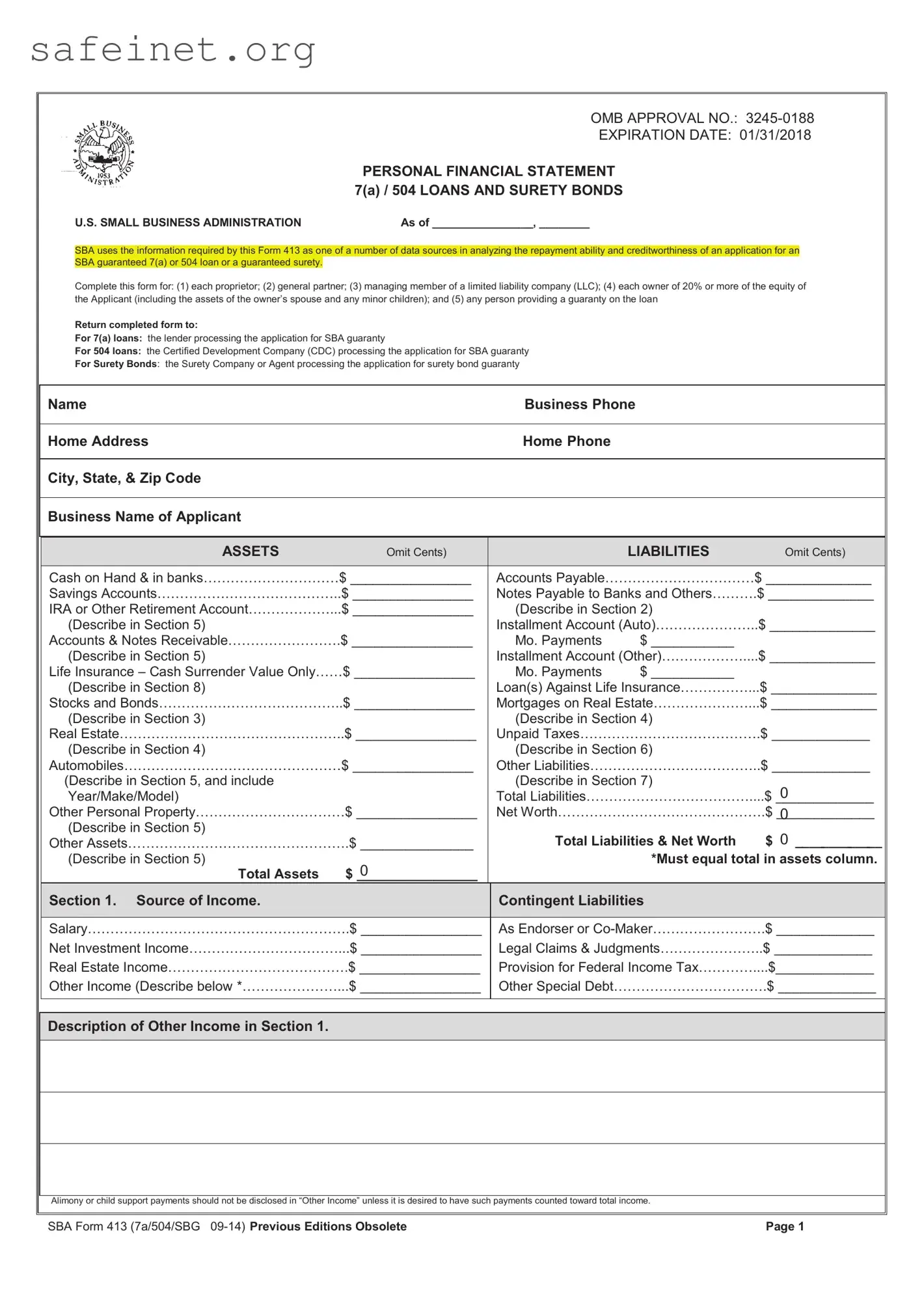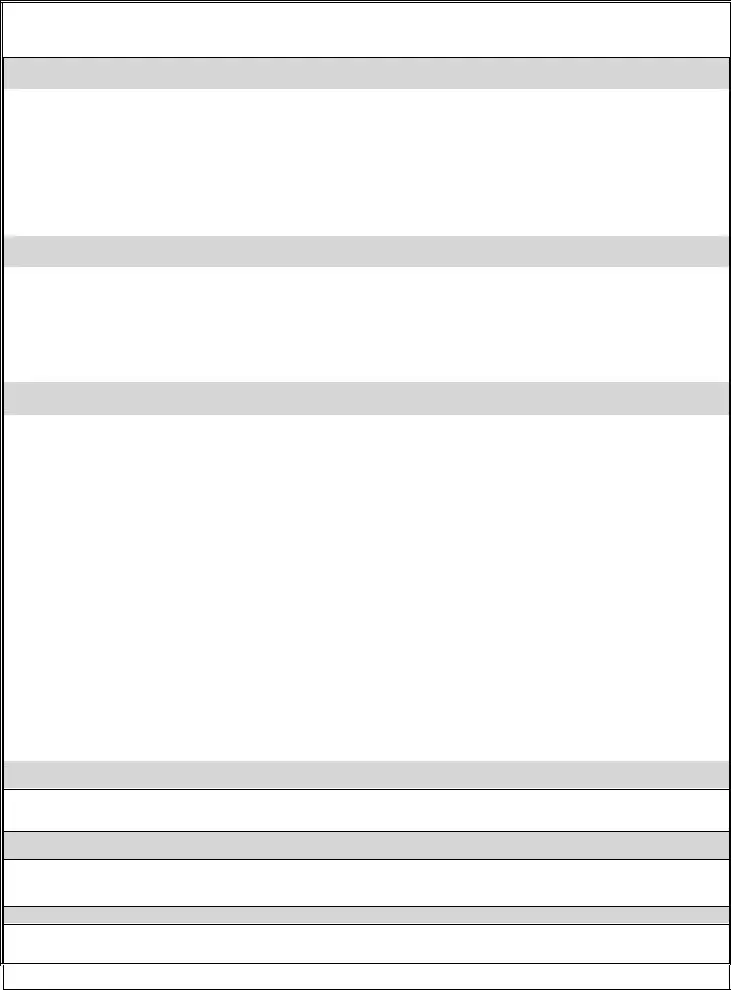Executive Orders -- Floodplain Management and Wetland Protection (42 F.R. 26951 and 42 F.R. 26961) – SBA discourages settlement in or development of a floodplain or a wetland. This statement is to notify all SBA loan applicants that such actions are hazardous to both life and property and should be avoided. The additional cost of flood preventive construction must be considered in addition to the possible loss of all assets and investments due to a future flood.
Occupational Safety and Health Act (15 U.S.C. 651 et seq.) -- This legislation authorizes the Occupational Safety and Health Administration in the Department of Labor to require businesses to modify facilities and procedures to protect employees or pay penalty fees. Businesses can be forced to cease operations or be prevented from starting operations in a new facility. Therefore, SBA may require additional information from an applicant to determine whether the business will be in compliance with OSHA regulations and allowed to operate its facility after the loan is approved and disbursed. Signing this form as an applicant is certification that the OSHA requirements that apply to the applicant business have been determined and that the applicant, to the best of its knowledge, is in compliance. Furthermore, applicant certifies that it will remain in compliance during the life of the loan.
Civil Rights Legislation -- All businesses receiving SBA financial assistance must agree not to discriminate in any business practice, including employment practices and services to the public on the basis of categories cited in 13 C.F.R., Parts 112, 113, and 117 of SBA Regulations. This includes making their goods and services available to handicapped clients or customers. All business borrowers will be required to display the "Equal Employment Opportunity Poster" prescribed by SBA.
Equal Credit Opportunity Act (15 U.S.C. 1691) -- The Federal Equal Credit Opportunity Act prohibits creditors from discriminating against credit applicants on the basis of race, color, religion, national origin, sex, marital status or age (provided the applicant has the capacity to enter into a binding contract); because all or part of the applicant's income derives from any public assistance program, or because the applicant has in good faith exercised any right under the Consumer Credit Protection Act.
Executive Order 11738 -- Environmental Protection (38 F.R. 251621) -- The Executive Order charges SBA with administering its loan programs in a manner that will result in effective enforcement of the Clean Air Act, the Federal Water Pollution Act and other environment protection legislation.
Debt Collection Act of 1982, Deficit Reduction Act of 1984 (31 U.S.C. 3701 et seq. and other titles) -- These laws require SBA to collect aggressively any loan payments which become delinquent. SBA must obtain your taxpayer identification number when you apply for a loan. If you receive a loan, and do not make payments as they come due, SBA may take one or more of the following actions: (1) report the status of your loan(s) to credit bureaus, (2) hire a collection agency to collect your loan, (3) offset your income tax refund or other amounts due to you from the Federal Government,
(4)suspend or debar you or your company from doing business with the Federal Government, (5) refer your loan to the Department of Justice or other attorneys for litigation, or (6) foreclose on collateral or take other action permitted in the loan instruments.
Immigration Reform and Control Act of 1986 (Pub. L. 99-603) -- If you are an alien who was in this country illegally since before January 1, 1982, you may have been granted lawful temporary resident status by the United States Immigration and Naturalization Service pursuant to the Immigration Reform and Control Act of 1986. For five years from the date you are granted such status, you are not eligible for financial assistance from the SBA in the form of a loan guaranty under Section 7(a) of the Small Business Act unless you are disabled or a Cuban or Haitian entrant. When you sign this document, you are making the certification that the Immigration Reform and Control Act of 1986 does not apply to you, or if it does apply, more than five years have elapsed since you have been granted lawful temporary resident status pursuant to such 1986 legislation.
Lead-Based Paint Poisoning Prevention Act (42 U.S.C. 4821 et seq.)
Borrowers using SBA funds for the construction or rehabilitation of a residential structure are prohibited from using lead- based paint (as defined in SBA regulations) on all interior surfaces, whether accessible or not, and exterior surfaces, such as stairs, decks, porches, railings, windows and doors, which are readily accessible to children under 7 years of age. A "residential structure" is any home, apartment, hotel, motel, orphanage, boarding school, dormitory, day care center, extended care facility, college or other school housing, hospital, group practice or community facility and all other residential or institutional structures where persons reside.
Executive Order 12549, Debarment and Suspension 2 CFR 2700
1.The borrower or contractor certifies, by submission of its application for an SBA loan or bond guarantee, that neither it nor its principals are presently debarred, suspended, proposed for debarment, declared ineligible, or voluntarily excluded from participation in this transaction by any Federal department or agency.
2.Where the prospective lower tier participant is unable to certify to any of the statements in this certification, such prospective participants shall attach an explanation to the application.





